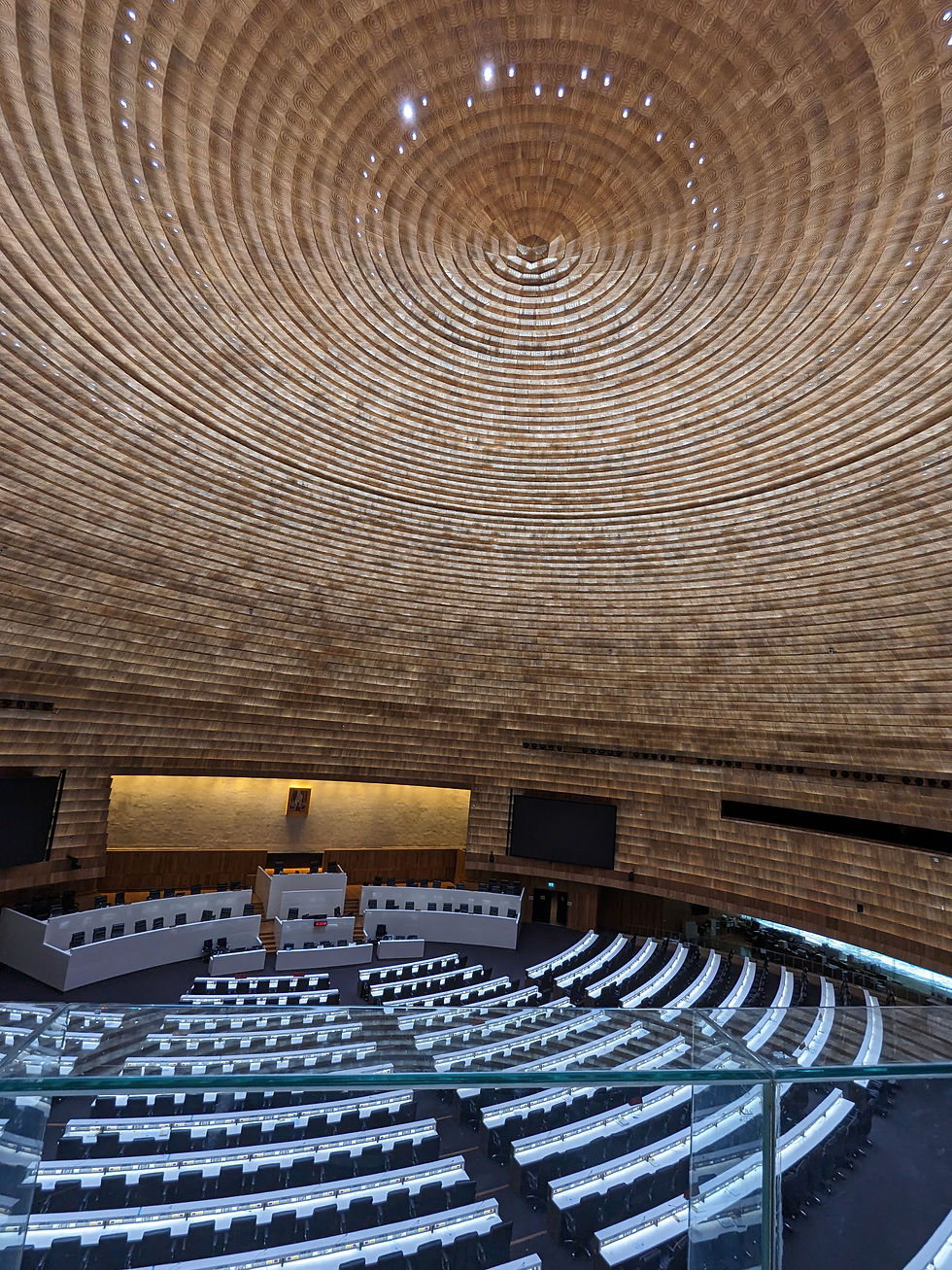Exploring the Thailand Parliament Building: A Fusion of Tradition and Modernity
- Gourav

- May 12, 2024
- 2 min read
Updated: Jul 24
1. Historical Context
The National Assembly of Thailand plays a pivotal role in the country’s democratic governance. Its roots trace back to June 27, 1932, when a group called “Khana Ratsadorn” orchestrated a revolution, transforming Thailand from an absolute monarchy to a democratic form of government. The Ananta Samakom Throne Hall served as their initial hub for debates and discussions. Subsequently, the first parliamentary sitting took place there on June 28, 1932. As the Thai population grew, the need for a dedicated parliamentary space became evident.
2. The Birth of Sappaya-Sapasathan
2.1 Architectural Features
Thai Pagoda: At the heart of the building stands a majestic Thai pagoda, symbolizing cultural heritage and spiritual significance.
Suriyan Hall (Hall of the Sun): This 800-seat hall hosts the House of Representatives, where critical legislative decisions are made.
Chantra Hall (Hall of the Moon): With 300 seats, this hall accommodates the Senate of Thailand. Its design incorporates wood from 5,018 teak trees, representing the “DNA of Thailand.”

2.2 Modern Architectural Style
The Assembly Hall is the epicenter of parliamentary proceedings. Its round shape under a dome exudes modernity, sophistication, and functionality.
Microphones and electronic voting buttons enhance efficiency, controlled by a computer system.
Sophisticated Light and Sound System: Ensuring optimal visibility and audibility during debates and deliberations.

3. The Royal Statue of King Prajadhipok
In front of Parliament Building 1, a statue pays homage to King Prajadhipok (King Rama VII). His legacy lies in leading Thailand toward constitutional democracy, relinquishing royal power for the benefit of the Thai people.
4. Museum of the Thai National Assembly
Situated beneath the base of the Royal Statue, this museum chronicles the evolution of Thailand’s parliamentary system. Visitors can explore exhibits and documents that narrate the journey from absolute monarchy to democracy.

5. Thainess and Elegance
The Parliament Building embodies elegance, reflecting the dignity and value of Thainess. It seamlessly weaves together arts, culture, beliefs, and wisdom from the past to the present.
In summary, the Sappaya-Sapasathan stands as a testament to Thailand’s commitment to democracy, architectural innovation, and cultural continuity. As you reflect on your visit, remember that every beam, every curve, and every teak tree carries a piece of Thailand’s rich history.



Comments